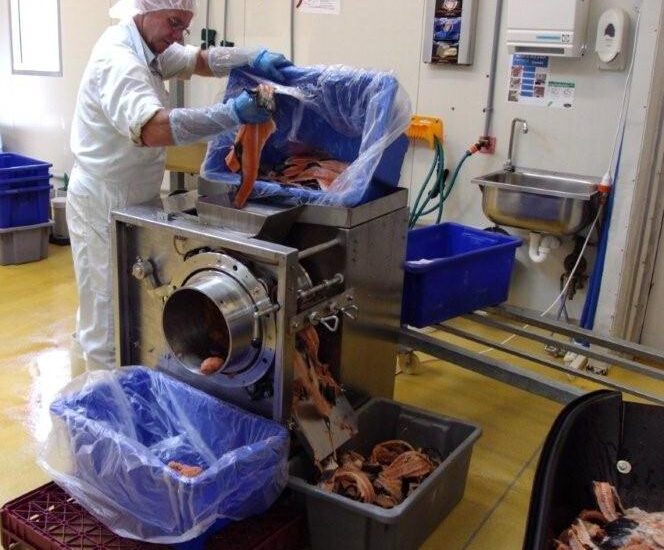Demand for fish deboning machines is expected to increase globally at a CAGR of 3.9%. The market’s revenue is anticipated to be around $274 million in 2023 and climb to $415 million by 2033.
The global seafood industry is experiencing significant growth as consumer demand for fish and seafood products continues to rise. In this fast-paced market, seafood processing facilities face the challenge of efficiently and cost-effectively preparing fish fillets to meet the increasing demand. The answer to this challenge lies in the Fish Deboning Machine Market. This cutting-edge technology is revolutionizing fish processing by automating the deboning process, increasing productivity, reducing labor costs, and ensuring consistent, high-quality fillets. In this article, we explore the key drivers behind the fish deboning machine market’s expansion and the benefits it brings to the seafood processing industry.
Get a sample PDF of the report @
https://www.futuremarketinsights.com/reports/sample/rep-gb-16107
- Rising Demand for Processed Seafood: A Catalyst for Innovation
The global population’s growing interest in healthy and nutritious food has sparked an upsurge in demand for processed seafood, particularly boneless fillets. Fish deboning machines have emerged as a crucial component in seafood processing plants, enabling them to keep up with consumer preferences and market demands. By automating the deboning process, these machines help seafood processors streamline their operations and produce bone-free fillets efficiently, meeting the needs of both domestic and international markets.
- Enhanced Efficiency and Productivity: A Game-Changer for Seafood Processors
Fish deboning machines offer unmatched efficiency and productivity compared to manual deboning methods. These machines are designed to precisely and rapidly remove bones from fish fillets with minimal waste. As a result, seafood processing facilities can significantly increase their production capacity, reducing processing time and labor requirements. Enhanced efficiency translates to cost savings, making the fish deboning machine a valuable investment for large-scale seafood processors looking to optimize their operations.
- Improved Fillet Quality and Consistency: Winning Consumer Trust
Manual deboning is a delicate and time-consuming process, leaving room for human error and inconsistencies in the final product. In contrast, fish deboning machines are engineered to deliver uniform and high-quality fillets with minimal bruising or damage. The result is a visually appealing, boneless fillet that meets consumers’ expectations and culinary standards. Consistency in product quality fosters customer trust and loyalty, giving seafood processors a competitive edge in the market.
- Compliance with Stringent Food Safety Standards: Ensuring Consumer Safety
Food safety is a top priority in the seafood industry. Fish deboning machines are designed with hygiene and safety features that meet or exceed industry standards. They are made of materials that are easy to clean and sanitize, reducing the risk of cross-contamination. Automated deboning minimizes human handling of the product, reducing the chance of contamination and ensuring that the end product is safe for consumption.
Speak to our Research Expert @
https://www.futuremarketinsights.com/ask-question/rep-gb-16107
- Diversification of Fish Deboning Technology: Meeting Market Demands
The fish deboning machine market is witnessing continuous innovation, with manufacturers developing machines that can handle a variety of fish species and sizes. From small tabletop models for small-scale fish processors to large industrial-grade machines for high-volume production facilities, the market offers a wide range of options to cater to diverse business needs. As a result, seafood processing companies of all sizes can find a suitable deboning solution tailored to their requirements.
Key Segments Profiled in the Fish Deboning Machine Market Survey
By Operating Type:
- Automatic
- Semi-automatic
By Machine Capacity:
- Below 200 Kg/Hr
- 200 Kg to 1,000 Kg/Hr
- Above 1,000 Kg/Hr
By Application:
- Commercial
- Institutional
By Region:
- North America
- Latin America
- Asia Pacific
- Middle East and Africa (MEA)
- Europe
Pre-Book Report @
https://www.futuremarketinsights.com/checkout/16107
About Future Market Insights (FMI)
Future Market Insights (ESOMAR certified market research organization and a member of Greater New York Chamber of Commerce) provides in-depth insights into governing factors elevating the demand in the market. It discloses opportunities that will favor the market growth in various segments on the basis of Source, Application, Sales Channel and End Use over the next 10-years.
Contact Us :
Future Market Insights, Inc.
Christiana Corporate, 200 Continental Drive,
Suite 401, Newark, Delaware – 19713, USA
T: +1-845-579-5705
For Sales Enquiries: sales@futuremarketinsights.com
Browse All Reports: https://www.futuremarketinsights.com/reports

